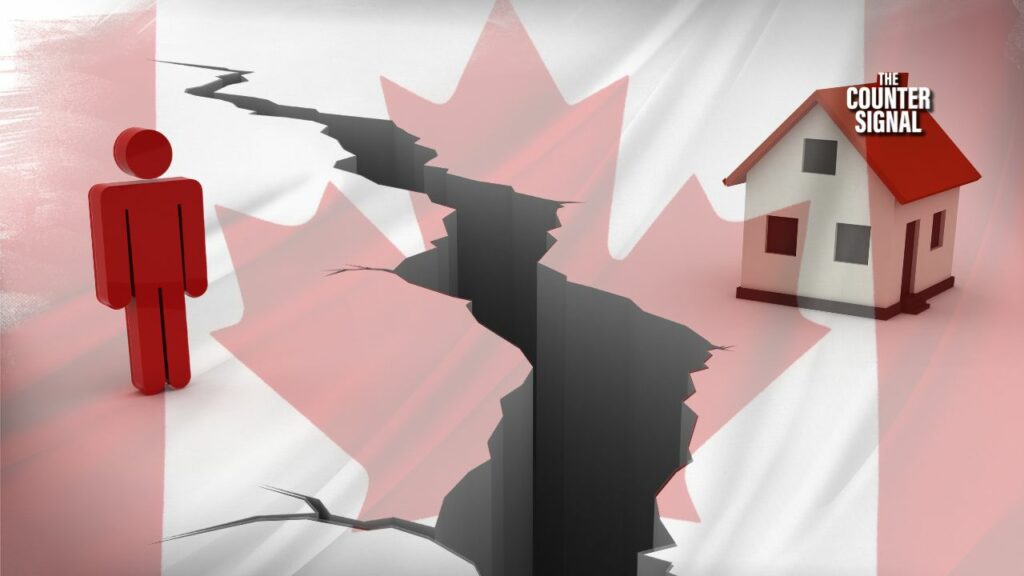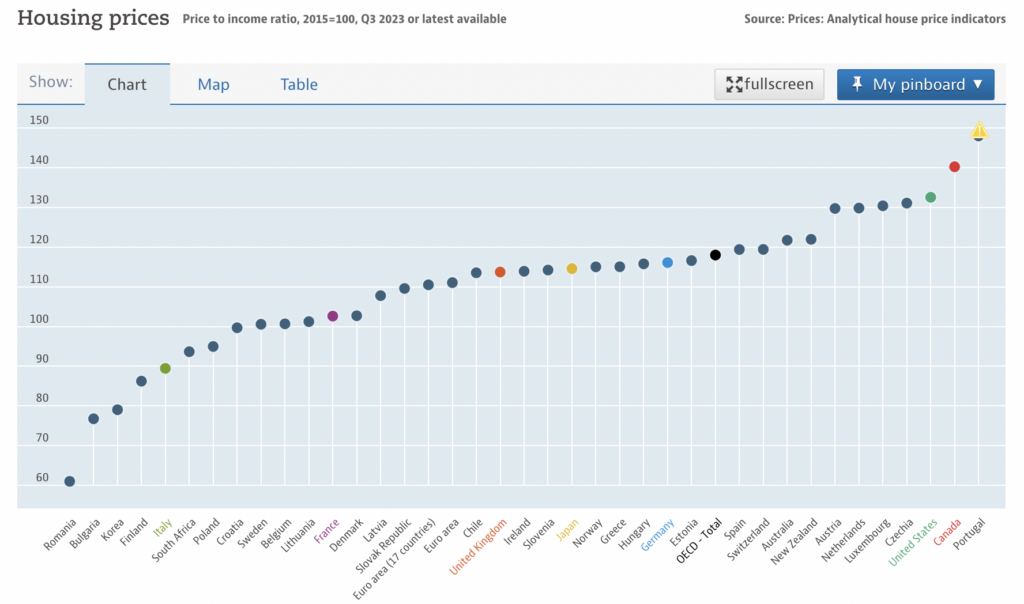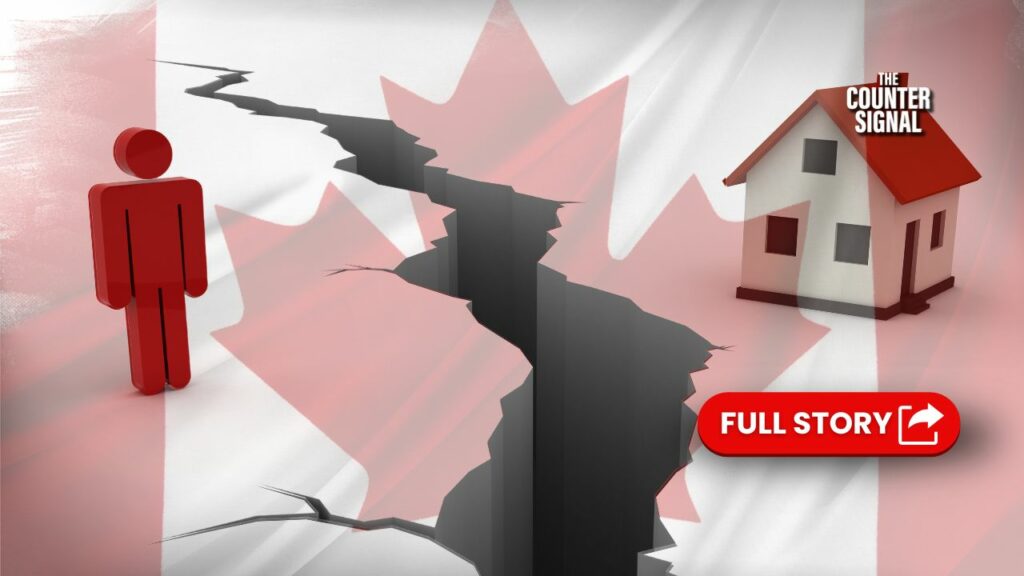Canada is currently on its way to taking first place for having the most unaffordable housing market on Earth.

According to data from the OECD, which tracks housing prices amongst developed nations across the globe, Canada currently has the second highest housing price-to-income ratio in the world, second only to Portugal, which is experiencing an unusual bubble that has already hit a ceiling and is expected to cool over the coming months.
In other words, Canada is poised to officially become the most unaffordable place on Earth in terms of housing over the coming months based on Canadians’ income levels and ability to afford rent, mortgages, etc. But really, it already is the worst.

And things don’t look like they’ll be getting better any time soon.
Housing affordability is at its worst levels in the country’s history
According to the latest housing affordability report from RBC, soaring interest rates have skyrocketed ownership costs, making it the toughest time ever for Canadians to afford a home.
In the fourth quarter of 2023, a household earning a median income needed to spend a staggering 63.5% of this income to cover the costs of owning an average home at market price. This is up from 61.8% in the previous quarter.
Meanwhile, the monthly mortgage payment for a composite home (valued at $796,300) increased by more than $125 (3.3%) to $3,990.
Affordability worsened in all markets tracked by RBC, with Vancouver, Victoria, and Toronto experiencing the biggest deterioration. The situation also got worse in Ottawa, Montreal, and Halifax, where affordability is at or near all-time worst levels.
In the case of Vancouver, a house now costs an average of over $1 million—on par with California, a place renowned for its unaffordability—while Canadian wages and productivity remain utterly stagnant.
The Bank of Canada’s historic rate hike campaign has seriously hurt house hunters’ purchasing budgets. RBC estimates that the maximum budget for a household with a median income ($85,400) has shrunk by 22% since the first quarter of 2022 to just under $500,000, while home prices have fallen just 1.8% over the same period.
Rising prices and stagnant wages driven by unsustainable levels of immigration
In September 2023, documents obtained by The Counter Signal revealed that Trudeau was informed by the Secretary of the Cabinet, Janice Charette, that his immigration policy was directly causing the country’s housing affordability crisis.
The memo informed Trudeau that Canada’s housing supply shortage is the “key factor” behind the affordability crisis, and the country’s homebuilding pace is woefully short of filling the gap by 2030.
“There is broad agreement among experts that homebuilding has been insufficient in comparison with housing demand in recent years, particularly with the increase in immigration since 2015,” referring to the year Trudeau took office.
The deputy minister, along with other officials, was also warned by the IRCC that housing construction wasn’t anywhere near the levels it needed to be to keep up with the millions of new immigrants, but the government didn’t slow down.
“In Canada, population growth has exceeded the growth in available housing units,” the IRCC wrote.
“As the federal authority charged with managing immigration, IRCC policy-makers must understand the misalignment between population growth and housing supply, and how permanent and temporary immigration shapes population growth.”
Relief unlikely despite Trudeau’s admission of failure
While PM Justin Trudeau recently denied that the surge in permanent residents created housing shortages, he did concede that the mass importation of temporary workers and students has led to stagnant wages.
“Over the past few years, we’ve seen a massive spike in temporary immigration, whether it’s temporary foreign workers or whether it’s international students in particular that have grown at a rate far beyond what Canada has been able to absorb,” Trudeau said at a housing announcement.
“To give an example, in 2017, two per cent of Canada’s population was made up of temporary immigrants. Now we’re at 7.5 per cent of our population comprised of temporary immigrants.
“That’s something that we need to get back under control,” he continued, adding, “increasingly more and more businesses [are] relying on temporary foreign workers in a way that is driving down wages in some sectors.”
Despite this, there are few signs that immigration will slow down in any meaningful way any time soon, with the government only willing to provide a temporary cap on international students. Thus, as Canada moves into the top ranking for worst housing affordability on the planet, it’s likely the country will retain this position for the foreseeable future.










